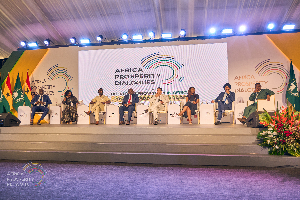Epigenetics and Cancer
Epigenetic modifications play a critical role in many cellular processes, including DNA methylation, histone modification (acetylation, methylation, and phosphorylation), and microRNA expression.
Massive deregulation of all components of the epigenetic machinery is a hallmark of cancer. These alterations affect normal gene regulation and impede normal cellular processes including cell cycle, DNA repair, cell growth, differentiation and apoptosis.
Because epigenetic alterations appear early in cancer development and represent potentially initiating events during carcinogenesis, they are promising targets for anticancer interventions by chemopreventive and chemotherapeutic strategies using epigenetically active agents.
Like gene mutations, epigenetic lesions that disrupt gene expression probably occur in both driver and passenger forms — many lesions won’t contribute to tumor formation while a critical few will promote carcinogenesis. Epigenetic lesions can result from gene mutations, but environmental exposures can also cause epigenetic aberrations.
The epigenome: Where our genes and exposome meet
The “nature vs. nurture” debates—the question of whether our genes (nature) or environment (nurture) are more important to determining our health—has raged for decades. But the relatively simple distinction we’ve made over the years between genes and environment, as if they are separate and unrelated factors, turns out to be inaccurate.
According to Dr. Randy Jirtle: The nature vs. nurture argument is rapidly proving to be irrelevant, because we’re finding that the two forces interact in highly specific ways that alter gene behavior.
Dr. Jirtle is a pioneer in the field of epigenetics.
Also according to Dr. Jeff Kresser: We used to think our DNA was like a template or a mold: if you poured raw genetic material into this mold 100 times, you’d get 100 identical copies. This is consistent with the philosophy of “biological determinism” that was then trend right around the time the human genome was sequenced.
But a better analogy for genes might be a script for a theater production or film. Our genes are like the script, and the exposome and epigenome are like the production and performance.

The script of Romeo and Juliet doesn’t change from one production to the next, but how it is produced and performed can vary dramatically depending on the director, cast, crew, set design, costumes, and other factors.
If a script is terrible, even a great performance can’t save it. On the other hand, the best script in the world won’t matter with a terrible production.
This explains why identical twins are similar, but not the same. They are matched for genes, age, sex, pre-gestational (and often post-gestational) environment, so we’d expect their risk of having the same diseases to be very high if genes were running the show.
Yet in most cases the discordance rates between twins for even highly heritable diseases like schizophrenia can be up to 50 percent. In other words, if one identical twin has schizophrenia, there’s only a 50 percent chance that the other twin will have it.
Dr. Francis Collins, director of the US National Institutes of Health, once summarized the relationship between genetics and the exposome in a single, pithy sentence: Genes load the gun, but environment pulls the trigger.
Don’t get me wrong—genes do have a powerful influence on our susceptibility to disease, and there are situations where information about your particular genetic makeup can be useful.
For example, there are genes (such as MTHFR, COMT, MTR, MTRR, etc.) that affect the methylation cycle, and mutations in these genes may lead to impaired detoxification, neurotransmitter metabolism, cellular energy production, and a range of symptoms such as depression, fatigue, and infertility.
But in most cases, genetic predispositions will often only manifest in the presence of certain environmental factors.
The obesity or cancer epidemic is perhaps the clearest example of this. Our genes have not changed appreciably in the last 40 years, but during that time we’ve seen an explosion in the rates of obesity. This suggests that genetics are not the primary driver of obesity.
However, we do know that there are genes that predispose some people to obesity more than others, and that not everyone is equally affected by exposure to the same environment. This suggests that genes do play an important role.

Energy medicine and genetics converge
You are a being of energy, and as such, you have an electromagnetic component to every biological process. Every thought or feeling produces a complex shift in the biochemical makeup of your organs.
According to Blair Justice, PhD, author of Who Gets Sick, genes account for only 35 percent of longevity while diet, exercise, stress and other environmental factors are the major reasons people live longer.
Dawson Church cites the following impressive statistics in his book, The Genie in Your Genes: Epigenetic Medicine and the New Biology of Intention:
Heart surgery patients who have a strong social support network and spiritual practice have a mortality rate 1/7th of those who do not.
Studies show that meditating for just 30 minutes per day can boost your mood as much as antidepressants. Older people with positive attitudes have a 23 percent lower risk of death from cardiovascular disease and a 55 percent lower risk from all other causes.
Clearly, your beliefs, thoughts, and intentions have a much stronger effect on your life than your genes do.
Mysteries of meridian tapping technique finally revealed?
According to Dr. Mercola, Energy psychology techniques such as Meridian Tapping Technique (MTT) and acupuncture are powerful therapies that work with your body’s own electromagnetic system to produce healing. I have been a huge fan of MTT for many years, he says.
Epigenetics helps explain why MTT works so well.
He further said MTT has a direct effect on your genes through your body’s energy field, on a cellular level. By altering the signals to your energy meridians, you can directly influence your cells by affecting their genetic expression. In his book, The Genie in Your Genes, Church provides a very compelling and convincing model for how energy medicine works.
Would you be interested in a technique that allows you to positively impact your genes all by yourself, in 40 seconds or less?
That would be MTT.
If your genes are so mutable that they can change from moment to moment in response to your thoughts and feelings, then anything you can do to create a positive feeling state can profoundly, and immediately, improve your health. Has science finally discovered the link between your body’s energy field (aka, prana or qi) and disease?

Perhaps! In order to answer that question, more research is certainly needed into the connections between thought, quantum physics, energy, consciousness theory, and healing. This area is one of the hottest topics in science today.
The National Institutes of Health announced it would invest $190 million to accelerate epigenetic research. The list of illnesses to be studied in the resulting grants reveals the scope of this emerging field: cancer, Alzheimer's disease, autism, bipolar disorder, schizophrenia, asthma, kidney disease, glaucoma, muscular dystrophy and more.
Mind your thoughts
Since genetics is now intimately linked to mind and consciousness, the key to healing ultimately lies in controlling your beliefs and emotions. We’ve always taught our children the importance of controlling their behavior.
But maybe it’s time to focus more on teaching them how to control what they think and feel, since beliefs and emotions are what trigger the expression of specific DNA. Behavior will naturally follow. Even more importantly, what you think and feel may affect the DNA of your children, your grandchildren, and their children. I can’t say it better than Dawson Church:
"The code imprinted in our DNA, the one thing we thought was for certain, is just waiting for direction by us to change, creating a civilization that brings health, happiness, and vibrancy in ways in which the current medical establishment only dreams of."
What genes are
How living things get to be what they are is a question that has occupied philosophers and scientists for a very long time. In the past two or three hundred years, the focus has been on what Gregor Mendel has called units of heredity, or the physical elements that are transmitted from parents to offspring. These are now called genes, and have become an integral part of the conversation about human beings and their health.
The cells of living beings contain chromosomes, which are recognized as the bearers of inheritable information. Chromosomes contain a double helix of DNA (deoxyribonucleic acid) and protein. DNA is a long series of units called nucleotides. It is believed that DNA makes RNA (ribonucleic acid), which differs from DNA in chemical composition. RNA translates the information coded in the DNA and prompts the specific development of various proteins in the body.
Genes are stretches of DNA on the chromosome, and they may be thousands of nucleotide units in length. Gene splicing, or genetic engineering, consists of snipping one (or more) genes out of the DNA of one organism and splicing it into the DNA of another organism, much like film or sound tapes are spliced to re-arrange the sequence of images or sound.
This is the concluding part…so let’s look at these genes: what they do and what they don’t do.

What genes do
Individual genes provide codes for the many thousands of proteins, including enzymes that are found in the human body.
The theory called the central dogma of molecular biology is as follows: DNA makes RNA makes protein in a one-way, irreversible sequence, and no reverse feedback is possible -- that is, the environment cannot influence the DNA, and acquired characteristics are not heritable.
The genotype is the total inheritable genetic line of a class of organism (e.g., A sheep), while the phenotype is the individual expression of those genes in a single organism (e.g., a particular lamb).
The chromosome theory of inheritance includes the following: The collection of chromosomes in the fertilized egg constitutes the complete set of instructions for determining the timing and details of the formation of all the organs and tissues
DNA is self-replicating
DNA does not adapt to environmental stimuli
DNA is the generator of the structure that emerges from the fertilized egg in sexual reproduction.
The reductionism of genetics was firmly established with the work of Richard Dawkins, whose concept of the selfish gene proposed that organisms are nothing but the way in which genes reproduce.
What they don't do
Brian Goodwin, a British biologist and author of How the Leopard Changed its Spots: The Evolution of Complexity is one of a number of scientists less than enamored with the gene/chromosome theory of inheritance.
I will paraphrase his objections to the list enumerated in the previous section.
This proposition is incorrect. Genetic instructions, which create proteins, are insufficient to explain the processes that lead to the various organ formations such as those of the heart, nervous system, or limbs. Genes are not sufficient to explain the morphology of the organism.
DNA is not an independent replicator; it can only replicate accurately within the context of the cell in which it resides. That is, it needs a supportive environment, including an energy source and enzymes to help in the replication process. This means that the whole unit reproduces, not the DNA by itself.
There is ample evidence that yeasts and bacteria can change their DNA in response to environmental information.
DNA stabilizes the morphology of the organism, but does not generate it by itself.
In addition, while a particular gene defect might be associated with a particular disease, it cannot predict if, when, and how that disease will manifest itself.
Genetic engineering, which is the splicing of genes from one organism into the germ cells of another, for all its magical promises, is aaccurate Pandora Box.
There are serious concerns about the irreversible effect that genetically modified organisms such as corn and soy might have on the ecosystem and its life forms, because these changes in genetic material are inheritable as well as laterally, (or horizontally) transmissible via pollen, insects, and wind-borne DNA particles.
Cloning, a procedure that allows the development of new individuals from individual cells of adult animals, instead of by normal egg and sperm union, theoretically should produce animals identical to the parent donor of the cells; however, many cloned embryos die before birth and the survivors often have growth abnormalities such as breathing difficulties, heart problems, and gross overweight.
Genetics is quickly becoming the new religion, and proposes to explain everything from breast cancer to personality trains as stemming from the simple action of genes. There is a danger here.
As Ruth Hubbard and Elijah Wald argue in Exploding the Gene Myth: How genetic information is produced and manipulated by scientists, physicians, employers, insurance companies, educators, and law enforcers, The myth of the all-powerful gene is based on flawed science that discounts the environmental context in which we and our genes exist. It has many dangers, as it can lead to genetic discrimination and hazardous medical manipulations.
Bruce Lipton, Ph.D., a former cell biologist and professor, in his book The Biology of Belief: Unleashing the Power of Consciousness, Matter and Miracles (Hay House: 2005), clearly shows that genes are totally at the mercy of their environment – having a gene related to a disease does not in the least predict that one will get such a disease.
(By the way, everyone should read this book about mind-body medicine!) This new understanding about the important influence of the environment is called "epigenetics."
According to the Wall Street Journal (1/ 9/2010), the progression of coronary heart disease, diabetes, hypertension, prostate cancer, obesity, and other chronic conditions have been reversed with integrative medicine approaches such as plant-based diets, yoga, meditation and psychosocial support.
These approaches may change the expression of hundreds of genes in only a few months. Genes associated with cancer, heart disease and inflammation were downregulated ("turned off") whereas protective genes were upregulated ("turned on.") Even drugs have not been shown to do this.
Genes and Nutrition
The Central Dogma would assume that genes will always provide the same information and express the same proteins. Interestingly, several environmental factors may limit or change the expression of genetic information, notably aging and dietary manipulations.
There was an experiment done with "agouti" mice, which have a genetic abnormality that makes them yellow, fat, and diabetic from birth. But when "agouti" mothers were given a nutritionally enriched diet, their children turned out with the normal brown coat, thin, and healthy. Interestingly, the healthy offspring still had the "agouti" gene, they just didn't express it.
This experiment seems to show that nutrition can indeed influence genetic expression, for illness as well as for health. In other words: FOOD OVERRIDES GENETICS! Keep that in mind when you are contemplating the difficulties of healthy eating.
Fixing Tte exposome
Dr. Jeff Kresser further provided a clue on this: The recognition that environment, not genetics, is the primary driver of human health and disease carries with it a strong message of personal empowerment and responsibility.
If our genes were the only determinant of our health, there wouldn’t be much motivation to optimize our environment. But since we know that the choices we make in our lifetime predict 90 percent of our risk of disease and early death, we have a strong reason to take action to improve our health.
But where do you start? With so many possible environmental influences, ranging from diet to chemical exposure to air pollution to personal care products, where do you get the biggest bang for your buck?I believe that, for most people, the following four areas are the most important to focus on first:
Diet
Physical activity
Sleep
Stress management We have an overwhelming amount of research demonstrating the influence these four areas have on our health. I now understand why the Apostle Paul said In Philippians 2:12-13, “Therefore, my dear friends, as you have always obeyed – not only in my presence, but now much more in my absence – continue to work out your salvation with fear and trembling, for it is God who works in you to will and to act according to his purpose.”
Your Genetics Are Malleable -- Like Clay says Dr. Mercola. Your mind has the power to create or cure disease because your thoughts affect the expression of your genes
Now I’d like to hear from you. Were you aware of the concept of the exposome? If not, has learning about it changed your understanding? Does the recognition that our environment is the primary driver of health and disease leave you feeling empowered, overwhelmed, or both? Let me know via oburalph30@yahoo.co.uk or 0541090045
Dr. Raphael Nyarkotey Obu: PhD is a research Professor of Prostate cancer and Holistic Medicine at Da Vinci College of Holistic Medicine, Larnaca city, Cyprus and the National President of the Alternative Medical Association of Ghana(AMAG). He is also the President of Men’s Health Foundation Ghana
Reference
1. Chris Kresser. Why Your Genes Aren’t Your Destiny. To be accessed at https://chriskresser.com/why-your-genes-arent-your-destiny/
2. Your Genes Are Not Your Destiny: The Science Of Epigenetics to be accessed...http://www.donnieyance.com/your-genes-are-not-your-destiny-the-science-of-epigenetics/
3. Dr. Mercola(2010)Why Your DNA Isn't Your Destiny – to be accessed at articles.mercola.com/sites/articles/archive/.../why-your-dna-isnt-your-destiny.aspx
4. Dr. Scott Saunder. Do Your Genes Determine Your Destiny? - Home Cures That WorkTo be accessed at https://www.homecuresthatwork.com ›
5. Your Genes Are Not Your Destiny! | GreenMedInfo | Blog Entry to be accessed at www.greenmedinfo.com/blog/your-genes-are-not-your-destiny
Opinions of Tuesday, 29 August 2017
Columnist: Dr. Raphael Nyarkotey Obu

















